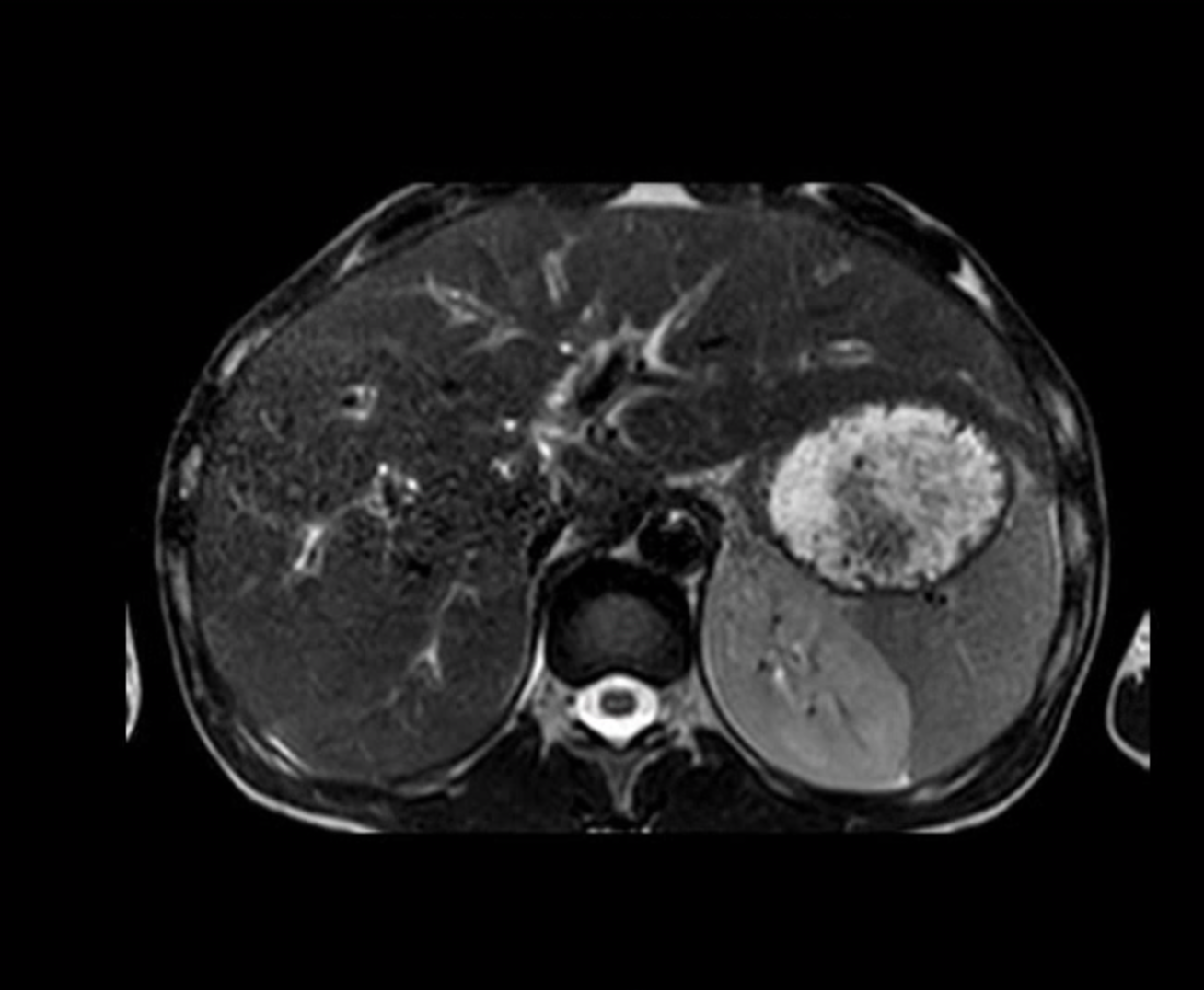Monday Poster Session
Category: Biliary/Pancreas
P2352 - Beyond the Colon: Hepatobiliary CMV as a Rare End-Organ Manifestation of AIDS
Monday, October 27, 2025
10:30 AM - 4:00 PM PDT
Location: Exhibit Hall
- HA
Hansani Angammana, MD (she/her/hers)
St. Barnabas Hospital
Bronx, NY
Presenting Author(s)
Hansani Angammana, MD, Julian Paniagua, MD, Haeshim Baek, MD
St. Barnabas Hospital, Bronx, NY
Introduction: Cytomegalovirus (CMV) is a common opportunistic infection in patients with advanced HIV/AIDS. While gastrointestinal involvement is well-documented, hepatobiliary CMV remains an exceptionally rare form of end-organ disease. We present a case of hepatobiliary CMV in an immunocompromised patient with concurrent colitis and profound liver enzyme elevation, confirmed via liver biopsy.
Case Description/
Methods: A 31-year-old male with AIDS (CD4 < 200) and history of crack cocaine use presented with one week of right lower quadrant abdominal pain, nausea, vomiting, diarrhea, and hematochezia. He had been out of HIV care for over a year after previously being on Biktarvy and Prezcobix. He reported 20–30 lb weight loss over 3 months.
CT abdomen/pelvis revealed findings consistent with colitis. Initial stool studies were positive for cryptosporidium, and nitazoxanide was initiated. Notably, liver function testing revealed ALP 1197 U/L and GGT 952 U/L with normal LDH and bilirubin. CT and MRCP showed heterogeneous liver enhancement, multiple ring-enhancing hepatic lesions, and intrahepatic biliary ductal dilation with a normal common bile duct. MRI demonstrated a 6.6 x 2.7 cm arterial-phase enhancing hepatic lesion.
Liver biopsy confirmed CMV inclusion bodies, and quantitative CMV PCR was >1000 IU/mL, meeting criteria for end-organ involvement. Ganciclovir was initiated and transitioned to valganciclovir 900 mg BID. After 21 days of antivirals, his valganciclovir was reduced to 900 mg daily per protocol. Patient was discharged with outpatient follow up.
Discussion: This case highlights a rare manifestation of CMV end-organ disease involving the hepatobiliary system in a severely immunocompromised patient. The patient presented with nonspecific GI symptoms, cryptosporidiosis, and liver enzyme elevation out of proportion to transaminases. Imaging findings were atypical and prompted biopsy, which confirmed hepatobiliary CMV. Treatment included antiviral therapy. This case underscores the importance of a broad differential, timely biopsy, and multidisciplinary care in managing complex presentations of AIDS-related GI and hepatobiliary disease.

Figure: MRI showing Dilated intrahepatic bile ducts with beaded appearance of ductal dilatation.
Disclosures:
Hansani Angammana indicated no relevant financial relationships.
Julian Paniagua indicated no relevant financial relationships.
Haeshim Baek indicated no relevant financial relationships.
Hansani Angammana, MD, Julian Paniagua, MD, Haeshim Baek, MD. P2352 - Beyond the Colon: Hepatobiliary CMV as a Rare End-Organ Manifestation of AIDS, ACG 2025 Annual Scientific Meeting Abstracts. Phoenix, AZ: American College of Gastroenterology.
St. Barnabas Hospital, Bronx, NY
Introduction: Cytomegalovirus (CMV) is a common opportunistic infection in patients with advanced HIV/AIDS. While gastrointestinal involvement is well-documented, hepatobiliary CMV remains an exceptionally rare form of end-organ disease. We present a case of hepatobiliary CMV in an immunocompromised patient with concurrent colitis and profound liver enzyme elevation, confirmed via liver biopsy.
Case Description/
Methods: A 31-year-old male with AIDS (CD4 < 200) and history of crack cocaine use presented with one week of right lower quadrant abdominal pain, nausea, vomiting, diarrhea, and hematochezia. He had been out of HIV care for over a year after previously being on Biktarvy and Prezcobix. He reported 20–30 lb weight loss over 3 months.
CT abdomen/pelvis revealed findings consistent with colitis. Initial stool studies were positive for cryptosporidium, and nitazoxanide was initiated. Notably, liver function testing revealed ALP 1197 U/L and GGT 952 U/L with normal LDH and bilirubin. CT and MRCP showed heterogeneous liver enhancement, multiple ring-enhancing hepatic lesions, and intrahepatic biliary ductal dilation with a normal common bile duct. MRI demonstrated a 6.6 x 2.7 cm arterial-phase enhancing hepatic lesion.
Liver biopsy confirmed CMV inclusion bodies, and quantitative CMV PCR was >1000 IU/mL, meeting criteria for end-organ involvement. Ganciclovir was initiated and transitioned to valganciclovir 900 mg BID. After 21 days of antivirals, his valganciclovir was reduced to 900 mg daily per protocol. Patient was discharged with outpatient follow up.
Discussion: This case highlights a rare manifestation of CMV end-organ disease involving the hepatobiliary system in a severely immunocompromised patient. The patient presented with nonspecific GI symptoms, cryptosporidiosis, and liver enzyme elevation out of proportion to transaminases. Imaging findings were atypical and prompted biopsy, which confirmed hepatobiliary CMV. Treatment included antiviral therapy. This case underscores the importance of a broad differential, timely biopsy, and multidisciplinary care in managing complex presentations of AIDS-related GI and hepatobiliary disease.

Figure: MRI showing Dilated intrahepatic bile ducts with beaded appearance of ductal dilatation.
Disclosures:
Hansani Angammana indicated no relevant financial relationships.
Julian Paniagua indicated no relevant financial relationships.
Haeshim Baek indicated no relevant financial relationships.
Hansani Angammana, MD, Julian Paniagua, MD, Haeshim Baek, MD. P2352 - Beyond the Colon: Hepatobiliary CMV as a Rare End-Organ Manifestation of AIDS, ACG 2025 Annual Scientific Meeting Abstracts. Phoenix, AZ: American College of Gastroenterology.
